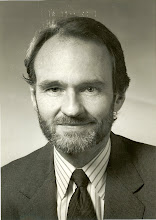The Fed’s not making it easy on us.
The recent case with the Bank of England was straightforward – when a central bank is intent to ease in the face of price pressures it means that, unless that economy is in an absolute free fall, the term structure will expand. That was the result.
We can’t as readily translate current Fed policy to FI price change. There is a good deal of confusion and disagreement back stage at the FOMC as we all know now; fine, but that doesn’t help us. We cannot predict price change now even if we knew policy change a year or so out, even the exact day and increment of change as we don’t have a sense of tension in the auction market at that forward time.
What we can do is join the rest of the noise makers and offer our two cents on the evolution of policy, from that which was very effective - through the 80’s and much of the 90’s - to that which we are visited with today.
As Hayek, Friedman and others knew all too well, the road to despair is littered with good intentions. Bernanke is a fine guy; he intends for the best but his activist, interventionist campaign along with his fetish for transparency has got the Fed and most of the rest of us in a mess.
History shows us that planners fail; no one individual or collection of individuals can substitute for the unseen hand of the free marketplace. This is true for any economy; this is true for any central bank. Adherence to a rule of law ensures a free and prosperous society where people are free to choose and prices reflect relative values that consumers place on alternatives.
Central banking is not immune, nor is it exempt – rule-based policy making embraces interest rates that reflect time preferences and the productivity of capital. The Fed's job is simply one - target stable prices, and the rest will take care of itself.
In time of crisis, central bank activism may be required; our problem is that the activism implemented in 2009 has been stamped into the Fed procedural manual. For example, printing money to buy debt from state-owned enterprises (Fannie / Freddie) to target a segment of economic activity may be fiscal policy making but it is contrary and corrosive to a free private market. The Fed in this case has politicized an investment decision that they have no business making in the first place. The Fed’s job is not to make choices, but to offer stability for others to do so.
The Fed governors and a few presidents railroaded the QE saga last year; now some sober bank presidents are wondering just what in the world they’ve acquiesced to.
We’ll see.
Robert Craven
The recent case with the Bank of England was straightforward – when a central bank is intent to ease in the face of price pressures it means that, unless that economy is in an absolute free fall, the term structure will expand. That was the result.
We can’t as readily translate current Fed policy to FI price change. There is a good deal of confusion and disagreement back stage at the FOMC as we all know now; fine, but that doesn’t help us. We cannot predict price change now even if we knew policy change a year or so out, even the exact day and increment of change as we don’t have a sense of tension in the auction market at that forward time.
What we can do is join the rest of the noise makers and offer our two cents on the evolution of policy, from that which was very effective - through the 80’s and much of the 90’s - to that which we are visited with today.
As Hayek, Friedman and others knew all too well, the road to despair is littered with good intentions. Bernanke is a fine guy; he intends for the best but his activist, interventionist campaign along with his fetish for transparency has got the Fed and most of the rest of us in a mess.
History shows us that planners fail; no one individual or collection of individuals can substitute for the unseen hand of the free marketplace. This is true for any economy; this is true for any central bank. Adherence to a rule of law ensures a free and prosperous society where people are free to choose and prices reflect relative values that consumers place on alternatives.
Central banking is not immune, nor is it exempt – rule-based policy making embraces interest rates that reflect time preferences and the productivity of capital. The Fed's job is simply one - target stable prices, and the rest will take care of itself.
In time of crisis, central bank activism may be required; our problem is that the activism implemented in 2009 has been stamped into the Fed procedural manual. For example, printing money to buy debt from state-owned enterprises (Fannie / Freddie) to target a segment of economic activity may be fiscal policy making but it is contrary and corrosive to a free private market. The Fed in this case has politicized an investment decision that they have no business making in the first place. The Fed’s job is not to make choices, but to offer stability for others to do so.
The Fed governors and a few presidents railroaded the QE saga last year; now some sober bank presidents are wondering just what in the world they’ve acquiesced to.
We’ll see.
Robert Craven
